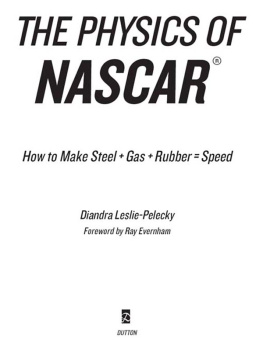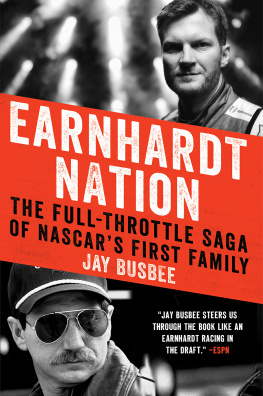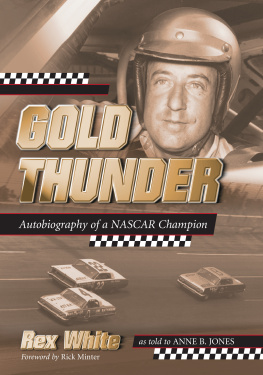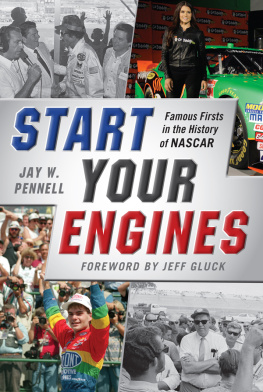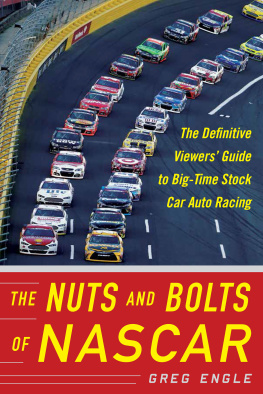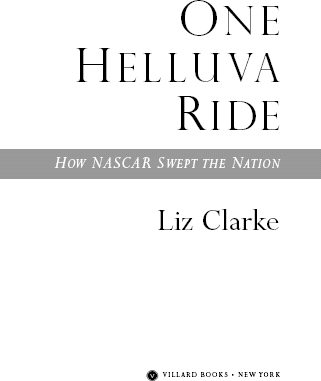Liz Clarke - One Helluva Ride: How NASCAR Swept the Nation
Here you can read online Liz Clarke - One Helluva Ride: How NASCAR Swept the Nation full text of the book (entire story) in english for free. Download pdf and epub, get meaning, cover and reviews about this ebook. year: 2008, publisher: Random House Publishing Group, genre: Detective and thriller. Description of the work, (preface) as well as reviews are available. Best literature library LitArk.com created for fans of good reading and offers a wide selection of genres:
Romance novel
Science fiction
Adventure
Detective
Science
History
Home and family
Prose
Art
Politics
Computer
Non-fiction
Religion
Business
Children
Humor
Choose a favorite category and find really read worthwhile books. Enjoy immersion in the world of imagination, feel the emotions of the characters or learn something new for yourself, make an fascinating discovery.

- Book:One Helluva Ride: How NASCAR Swept the Nation
- Author:
- Publisher:Random House Publishing Group
- Genre:
- Year:2008
- Rating:5 / 5
- Favourites:Add to favourites
- Your mark:
One Helluva Ride: How NASCAR Swept the Nation: summary, description and annotation
We offer to read an annotation, description, summary or preface (depends on what the author of the book "One Helluva Ride: How NASCAR Swept the Nation" wrote himself). If you haven't found the necessary information about the book — write in the comments, we will try to find it.
One Helluva Ride, a full-throttle account of the rise and reign of NASCAR nation, is award-winning motorsports reporter Liz Clarkes chronicle of how stock car racing exploded from regional obsession to national phenomenon. In covering the sport for more than fifteen years, Clarke has developed a strong rapport with NASCARs drivers, team owners, and hard-core fans. Through her reporting and analysis, we get to know the public and private sides of NASCARs most iconic figures, including seven-time champion Richard Petty, who set the standard for treating fans with respect, and the late Dale Earnhardt, whose brazen, bullying tactics wreaked havoc on the track, but whose heart was as big as Daytonas infield.
The sports world stopped in its tracks the day Earnhardt was killed on the last lap of the 2001 Daytona 500. Some feared that NASCARs soul would die with him. But it has raced on, steered by visionary promoters, the all-controlling France family (who founded the sport), and, above all, the next generation of drivers to stir fans passions: Dale Earnhardt, Jr., son of the NASCAR legend and now, like his father before him, the circuits most popular driver; Jeff Gordon, the beloved but oft-maligned outsider, bred from the cradle to be NASCARs winningest modern champion; and Kasey Kahne, a reluctant heartthrob whose confidence derives entirely from an accelerator pedal. Clarke also brings us inside NASCARs most triumphant and tragic dynasties: the Pettys, the Earnhardts, and the Allisonsand reveals how faith, family, and a deep-seated love of their sport helps them cope with grief and loss.
Clarke shows NASCAR to be at a crossroads. In pursuit of a broader audience, NASCAR has severed its sponsorship ties to Big Tobacco, abandoned racetracks in small markets in favor of speedways near glitzy major cities, and welcomed Japans Toyota into a sport traditionally restricted to American-made sedans. As NASCAR races toward mass appeal, some suggest it is leaving its roots behind. To others, it is boldly extending its reach from the Southern workingman to every man, woman, and child in the world.
Whether youre one of the die-hard NASCAR faithful or just a casual follower, nobody brings you closer to the sport and business of big-time stock car racing than Liz Clarke. This book, like the phenomenon it profiles, really is One Helluva Ride.
Liz Clarke: author's other books
Who wrote One Helluva Ride: How NASCAR Swept the Nation? Find out the surname, the name of the author of the book and a list of all author's works by series.

